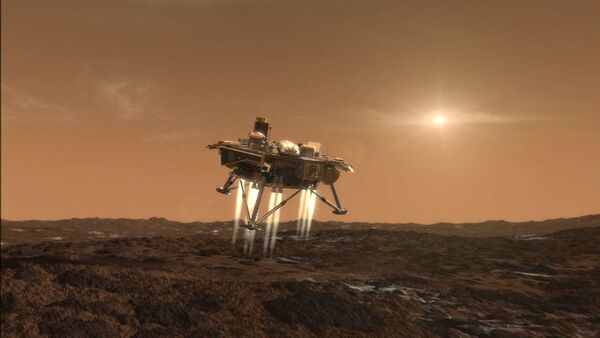NASA astronaut and physiologist Dr James Pawelczyk has suggested that the conquest of Mars would force Earthlings to search for unorthodox ways to survive on the Red Planet.
“Once we move outside the Van Allen belts - the magnetic field around our earth - then we're exposed to a much higher energy radiation forms,” Dr Pawelczyk said in an interview with the Daily Express.
“We also have the solar wind galactic cosmic radiation. And those really wreak havoc on the biology.”
Space explorers are well aware of the dangerous effects of space-borne radiation, which is thought to cause brain damage and could potentially jeopardise a Mars mission. NASA is going to test its brand new polyethylene radiation protection vest on two dummies and is also considering the use of hydrogen-rich shielding in spacecraft structure.
Adapt to Survive
Given the current level of technology, it is highly unlikely that humans will be able to alter Mars’s atmosphere – which is about 100 times thinner than Earth's and mostly consists of carbon dioxide – to make the planet more hospitable to humans.
“The idea of terraforming Mars is – at least with current technology – kind of unrealistic,” Dr Pawelczyk said.
The now-retired astronaut, 58, who was aboard NASA’s 1998 Space Shuttle mission, said humans will likely need to adjust to its climate instead and literally settle six – or even more – feet under.
He explained: “Survival on Mars really means going underground. So possibly identifying lava tubes of creating our own thick-walled structures but using the Martian surface.”
“We know there's a lot of water on Mars… but what we want to do is get to those points to study that water [and] see what it's all about but also understand how to use that in the fractional gravity environment so that we can make oxygen.”
“We can combine it with CO2 and we can make other fuels so that we don't have to take it with us from Earth.”
Mars Express, an unmanned research orbiter of the European Space Agency, has recently detected purported signs of water that once ran across the Martian surface. There has been no word of liquid water on Mars, and all water on the planet is thought to exist as ice and as vapour in the atmosphere.
NASA plans to send the first human missions to Mars in the 2030s; the agency’s head, Jim Bridenstine, said he wouldn’t rule out sending humans there in 2033.

